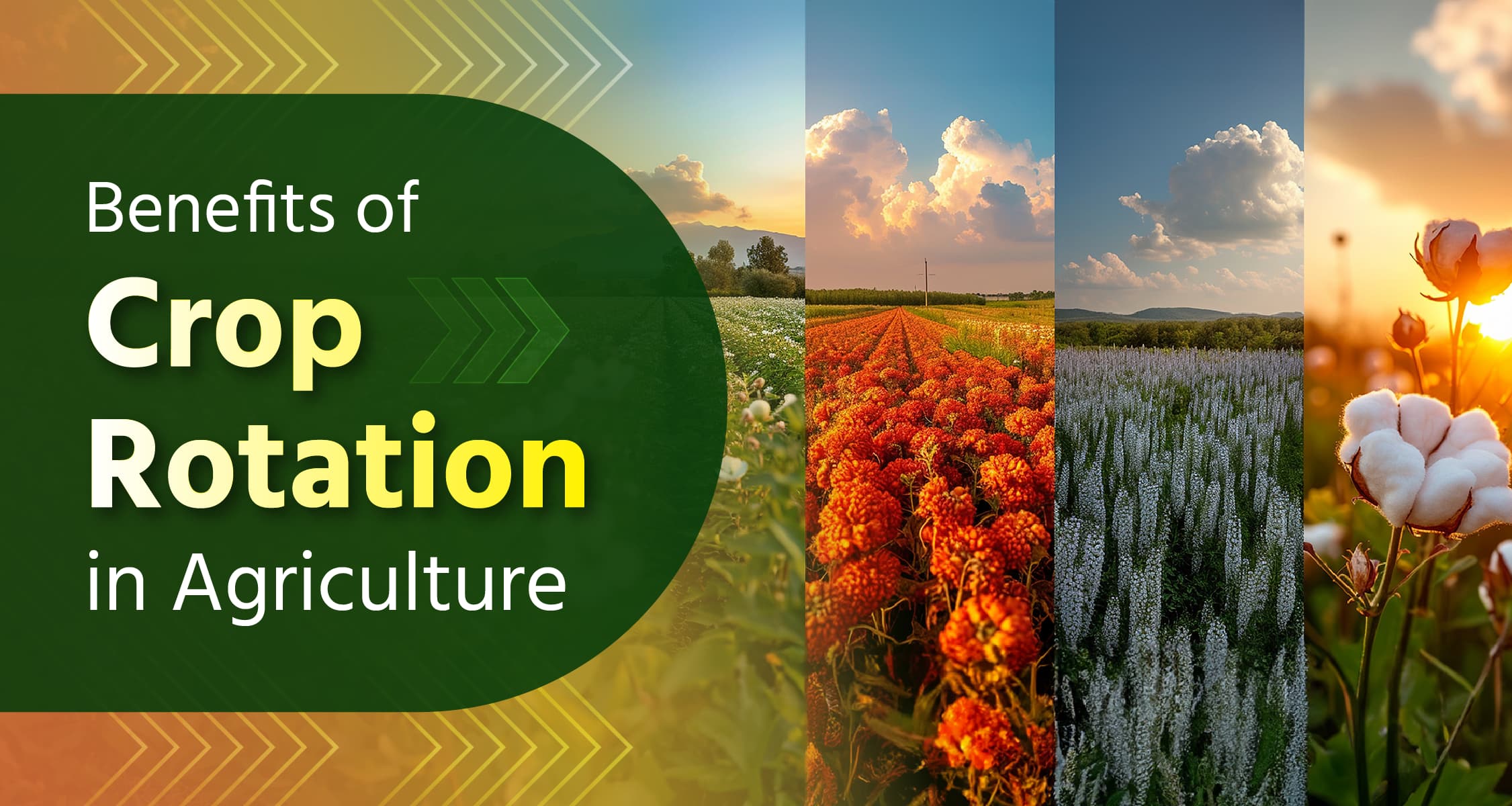Benefits of Crop Rotation in Agriculture

Crop rotation is an agricultural method in which different crops are grown in the same area. It has several benefits. It is used to improve soil health, reduce pest and disease incidence, and increase crop yield. Crop rotation can help reduce soil erosion, improve soil structure, and increase organic matter in the soil. It also enhances soil water-holding capacity.
Benefits of Crop Rotation
- Improvement in Soil Health: Crop rotation helps improve soil health by reducing soil erosion, increasing organic matter in the soil, and enhancing soil structure. It also helps in reducing soil-borne diseases and pests.
- Nutrient Management: Different crops have different nutrient requirements. Crop rotation helps in managing soil nutrients by alternating crops with different nutrient needs, reducing the reliance on synthetic fertilizers, and maintaining soil fertility.
- Pest Control: Crop rotation disrupts the life cycle of pests by affecting their habitat and food sources, thus aiding in pest management. Different crops attract different pests, so rotating crops can help reduce pest populations.
- Weed Control: Crop rotation helps control weeds by disrupting their growth cycle and reducing the need for herbicides.
- Diversification of Income: Crop rotation allows farmers to diversify their income by growing different crops, reducing the risk of crop failure, and providing a more stable income.
Factors to Consider for Adopting Crop Rotation
- Crop Selection: Farmers should carefully select crops that are suitable for their soil type, climate, and market demand. Additionally, they should consider the nutritional requirements, growth rates of plants, and sensitivity to pests and diseases in each crop.
- Soil Testing: Farmers should regularly test their soil to determine nutrient levels and pH for effective crop selection. This information can help them choose crops that are most suitable for their soil and develop a nutrient management plan.
- Pest and Disease Management: Farmers should have knowledge of pests and diseases affecting each crop and accordingly develop a crop rotation plan. Additionally, they should use integrated pest management practices to minimize the need for pesticides.
- Market Demand: Farmers should consider market demand for each crop and plan their crop rotation accordingly. They should also consider crop diversification to reduce risks and increase income in agriculture.
Risks Involved in Adopting Crop Rotation
There are several benefits involved in adopting crop rotation in agriculture. However, if it is not executed correctly, there can be some drawbacks as well.
- Reduction in Yield: In some cases, crop rotation may lead to reduced yields, especially if the crop sequence is not well planned or if the soil is not properly managed.
- Increase in Labor and Management: Compared to monoculture farming, crop rotation may require more labor and proper management. This is especially true if the farmer is not familiar with crop rotation.
- Possibility of Crop Damage: If there is inadequate knowledge of pest and disease control, and its planning, it can lead to crop damage. In some cases, this can result in significant financial losses for farmers.
- Soil Quality: Using frequent tillage to manage crop residues can lead to soil degradation and depletion of nutrients in the soil.
An example of crop rotation
- In the first year, crops like soybeans or lentils can be cultivated.
- Then in the following year, cereal crops like wheat or rice can be cultivated.
- Growing leguminous crops helps improve the amount of nitrogen in the soil, which benefits cereal crops the following year and reduces the need for nitrogen-rich fertilizers.
- Additionally, cereal crops can help break the cycle of pests and diseases that develop during the cultivation of leguminous crops.
Have you ever adopted crop rotation? Let us know your answer through comments. For more information like this, follow the 'Krishi Gyan' channel now. Also, don't forget to like and share this post.
Frequently Asked Questions (FAQs)
Q: What is crop rotation?
A: Crop rotation refers to the process of cultivating different crops in the same field according to the seasons. Adopting crop rotation is beneficial for controlling weeds, pests, and diseases in the field, improving soil health, and maintaining soil fertility.
Q: What is the importance of crop rotation?
A: Crop rotation is highly significant in agriculture. It improves soil health and reduces the need for fertilizers and pesticides. Additionally, it allows farmers to cultivate multiple crops in the same field according to market demand and weather conditions.
Q: What are the factors affecting crop rotation?
A: There are several factors that can influence crop rotation, including soil type, climate, water availability, prevalence of pests and diseases, market demand, size of the field, agricultural equipment, and more.
जारी रखने के लिए कृपया लॉगिन करें

फसल चिकित्सक से मुफ़्त सलाह पाएँ
